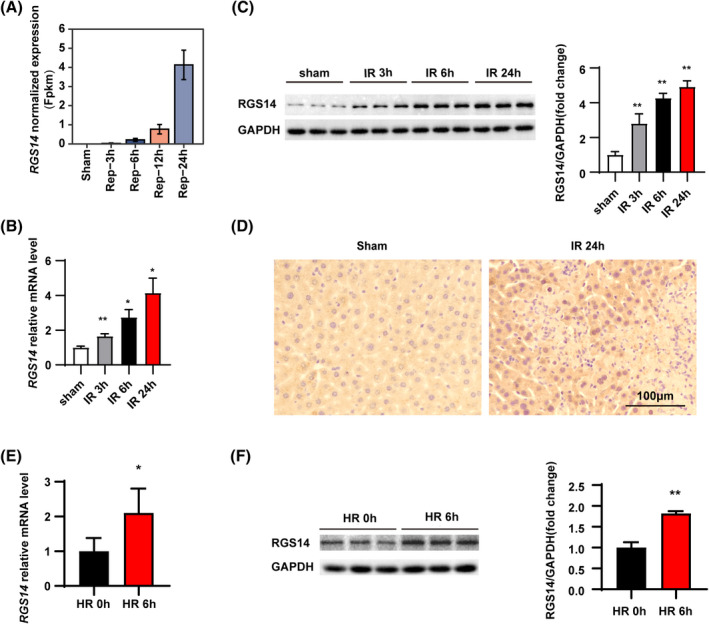FIGURE 1.

RGS14 expression is up‐regulated in both in vivo and in vitro hepatic IRI. (A) Public database showing changes in the expression of the RGS14 gene after sham treatment or ischemia for 1 h, followed by reperfusion for 3, 6, 12, and 24 h. (B) Real‐time quantitative PCR (RT‐qPCR) analysis of RGS14 mRNA levels in livers from WT mice subjected to sham treatment or ischemia for 1 h, followed by reperfusion for 3, 6, and 24 h (n = 4/group). (C) Western blot analysis and quantification of RGS14 protein expression in livers from WT mice subjected to sham treatment or ischemia for 1 h, followed by reperfusion for 3, 6, and 24 h (n = 3/group). (D) Immunohistochemical staining of RGS14 expression in livers of mice subjected to sham treatment or at 24 h after hepatic IR (n = 4/group). Scale bar, 100 μm. (E) RT‐qPCR analysis of RGS14 mRNA levels in cultured L02 hepatocytes after HR stimulation (n = 4 independent experiments). (F) Western blot analysis and quantification of RGS14 expression in cultured L02 hepatocytes after HR stimulation (n = 3 independent experiments). GAPDH served as a loading control. All data are shown as the mean ± SD. *p < 0.05, **p < 0.01. FPKM, fragments per kilobase of exon model per million mapped fragments
